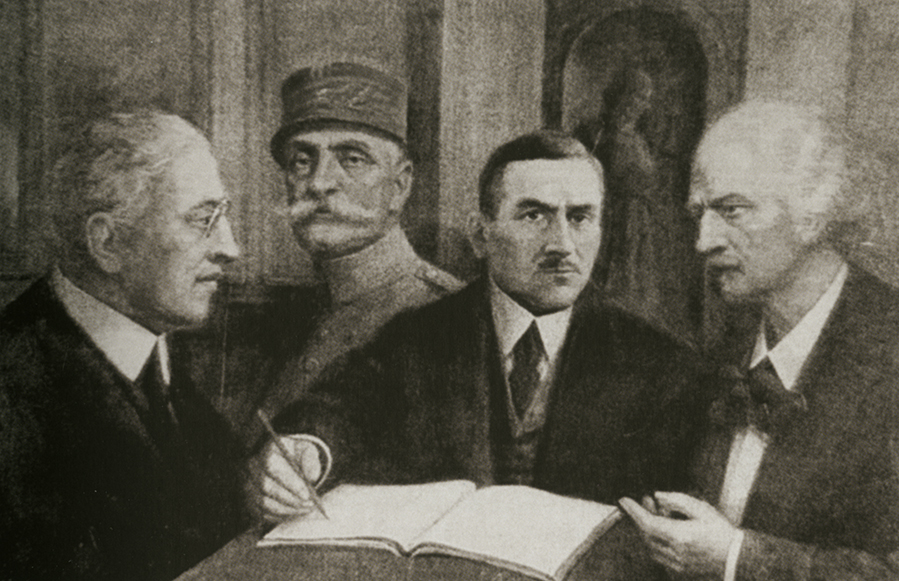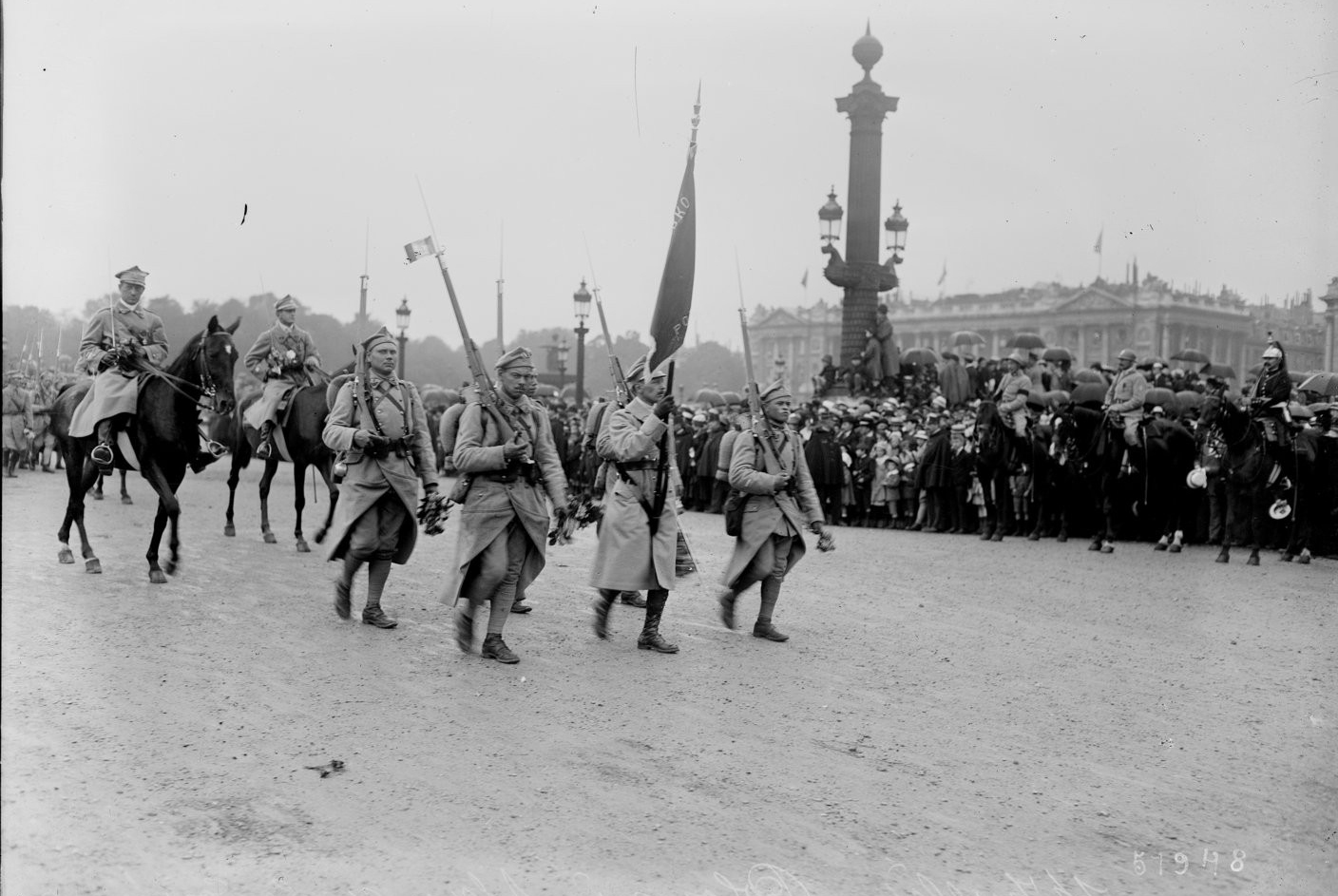Versailles Peace Conference
On 28 June 1919 Ignacy Jan Paderewski and Roman Dmowski signed the Treaty of Versailles, which introduced a new world order after the German defeat in World War I. The Treaty gave Greater Poland and a part of Pomerania (with the exclusion of the Free City of Gdańsk) to Poland. Less than a month later, on 14 July, the Polish troops took part in the victors’ parade in Paris. All that was extraordinary as at the begining of the conflict “not a single thought was devoted to Poland,” as Stephan Burián, the Austro-Hungarian minister of foreign affairs, later remembered.
At the end of World War I, however, the international circumstances were favorable to Poles, who had worked for their independence throughout the conflict.
In August 1917 the Polish National Committee was established on Roman Dmowski’s initiative. The organization pinned hopes for Polish independence on the Triple Entente’s victory. That autumn the Committee was recognized by the Allies as the representation of Poland, and Dmowski, same as Prince Adam Jerzy Czartoryski before him, carried out the foreign policy of the Polish state which still did not exist. The Committee had branches in Belgium, Brazil, Sweden, Great Britain, the USA, and Italy.
It dissolved when Ignacy Paderewski formed the government in the spring of 1919 and Roman Dmowski led the Polish delegation to the peace conference in Paris.


